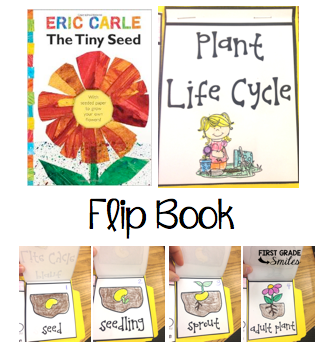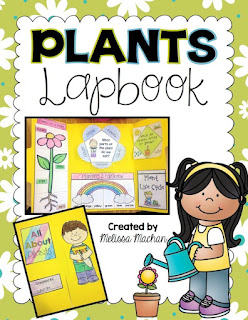Hi there! I don’t know about you, but when I went to school to become a teacher I was told that the KWL chart was one of the best ways to begin learning about a new topic. It accomplished the task of activating prior knowledge, had students asking questions and setting a purpose for learning, and then they recorded any new information that they learned. I still think a KWL chart is extremely useful and can be very meaningful for students, but I have personally found a new way of beginning units and I don't think I will be going back - a Schema Chart.
*The idea for this cutie penguin chart came from the very talented Cara Carroll*
Here’s why I love me some schema charts: When students share what they “know” about a topic on a KWL, sometimes they are not correct. For example, Penguins can fly. As a teacher, what do you do when that happens? Do you tell them right then that they are wrong or do you write the incorrect information on the KWL only to have to cross it off later? I never liked that decision because I didn’t think either one was a good solution to the problem. I didn't want to ruin the discovery of learning and I also didn't want to knock down the children who were brave to volunteer information only to tell them they were wrong. That child will never raise his/her hand again after that. But by using a Schema Chart you don’t have to make students feel bad anymore and you can let them DISCOVER their own misconceptions while learning.
We begin each unit by sharing all of our schema about the topic we are about to study. I use post-its so we can easily move them around later if we need to. When I first introduce the terms SCHEMA and MISCONCEPTIONS I explain that schema is what we “think” we know about a topic. Sometimes we “know” something and then realize that we didn’t have all the facts. This is called a misconception. I’ll say something like: “Is it ok to be “wrong” when we really thought we knew something? Of course - it happens to the best of us! Is it fun to be wrong? No, but in our classroom we don’t make anyone feel bad when they get an answer wrong. It’s all part of learning. None of us, including me, knows everything there is to know, so we won’t make anyone feel bad if they had a misconception. We just move our ideas over to misconceptions and write down some of our new learning.” Give them a quick explanation of how we will handle misconceptions and how that is all part of the process of learning. Of course, it’s all in the way you, as the teacher, deliver it.
Here’s why I love me some schema charts: When students share what they “know” about a topic on a KWL, sometimes they are not correct. For example, Penguins can fly. As a teacher, what do you do when that happens? Do you tell them right then that they are wrong or do you write the incorrect information on the KWL only to have to cross it off later? I never liked that decision because I didn’t think either one was a good solution to the problem. I didn't want to ruin the discovery of learning and I also didn't want to knock down the children who were brave to volunteer information only to tell them they were wrong. That child will never raise his/her hand again after that. But by using a Schema Chart you don’t have to make students feel bad anymore and you can let them DISCOVER their own misconceptions while learning.
We begin each unit by sharing all of our schema about the topic we are about to study. I use post-its so we can easily move them around later if we need to. When I first introduce the terms SCHEMA and MISCONCEPTIONS I explain that schema is what we “think” we know about a topic. Sometimes we “know” something and then realize that we didn’t have all the facts. This is called a misconception. I’ll say something like: “Is it ok to be “wrong” when we really thought we knew something? Of course - it happens to the best of us! Is it fun to be wrong? No, but in our classroom we don’t make anyone feel bad when they get an answer wrong. It’s all part of learning. None of us, including me, knows everything there is to know, so we won’t make anyone feel bad if they had a misconception. We just move our ideas over to misconceptions and write down some of our new learning.” Give them a quick explanation of how we will handle misconceptions and how that is all part of the process of learning. Of course, it’s all in the way you, as the teacher, deliver it.
The next two parts of a schema chart are the same as a KWL - QUESTIONS and NEW LEARNING. We think of questions we want answered and as we move through the unit we add new learning to our chart. And again, we move misconceptions over as we discover our new learning.
When I started using schema charts to begin my units I really saw my 1st graders using the language of schema and misconceptions. I heard them support each other when they learned they were wrong and say, “Oops, that was a misconception! Now we have some new learning!” It really was a great thing!
Now, you can make your charts look cute and more engaging like my penguin or reindeer, which of course take a little longer.
Or you can just use a piece of chart paper with columns for each part. Personally I like the visual, but sometimes I don't have the time or might forget to prepare my charts ahead of time. Here is one that I did on the fly about 5 minutes before we started learning about The First Thanksgiving.
The kids were eating snack while I was making it and it was actually so fun for them to see me put this together and talk about what they thought we would be doing next. Bad teacher planning on my part, but it did spark a bit of curiosity.
After I realized how much I really loved using schema charts to begin my units, I created a little pack called Be a Fact Finder that I could use with ANY nonfiction unit.
It includes chart pieces and a student component of the schema chart, as well as tons of other activities that can be used during whole group or guided reading and writing. My favorite are these Stop and Think bookmarks and signs.
Click HERE if you want to check this pack out in more detail.
I would love to hear any other ideas you have for sparking interest and activating prior knowledge when you begin a new unit. Comment below and share :)
Have a wonderful holiday!!









































